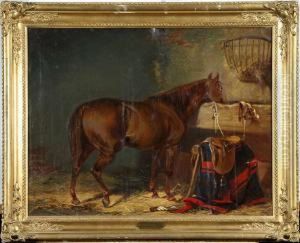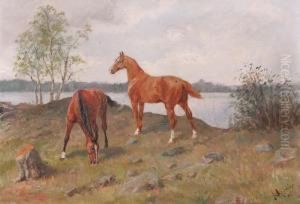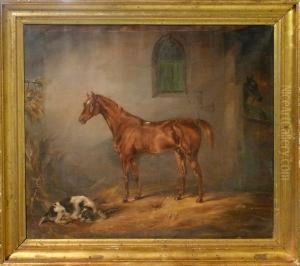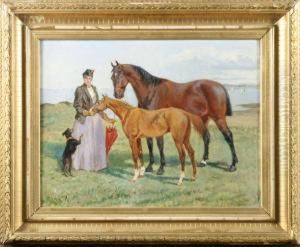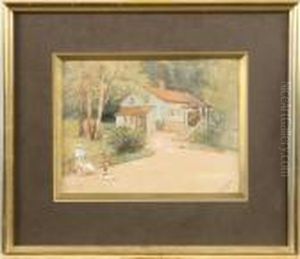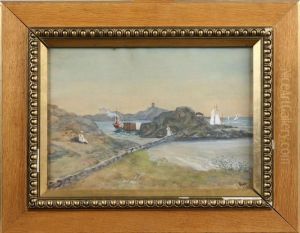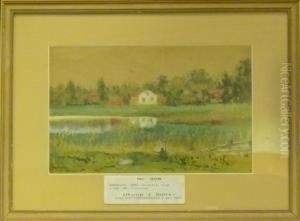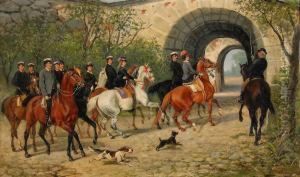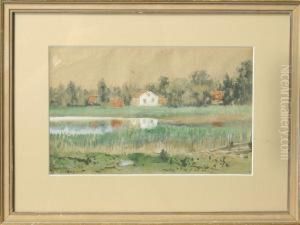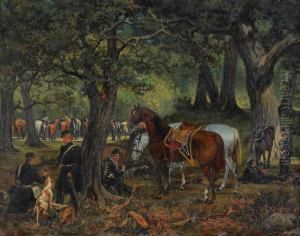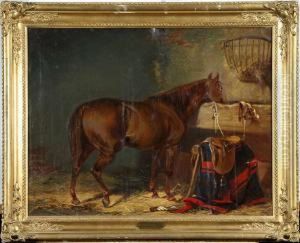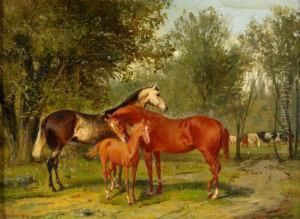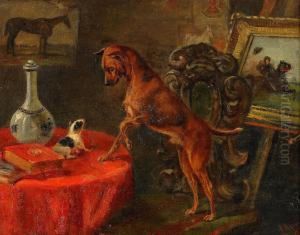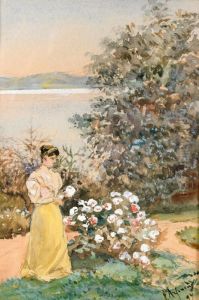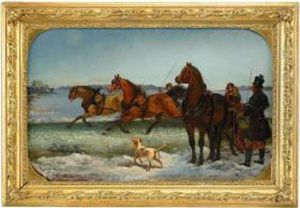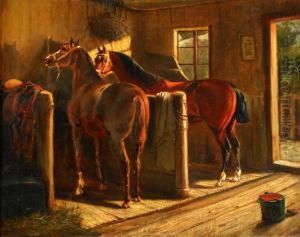John Arsenius Paintings
John Arsenius was a Swedish artist and heraldist, known for his significant contributions to Swedish heraldry and his work as a teacher of drawing. Born Johan Gustaf Arsenius on January 17, 1823, in the parish of Västra Ryd in Östergötland, Sweden, he came from a family with a strong educational background. His father was a rector, which likely influenced Arsenius's later career in educational roles.
Arsenius began his artistic training at an early age, showing a keen interest in drawing and painting. He pursued his passion for art by studying at the Royal Swedish Academy of Fine Arts in Stockholm, where he honed his skills and became acquainted with various artistic techniques and styles.
Throughout his career, Arsenius focused on heraldic art, which involves the design and display of coats of arms and other heraldic symbols. He became one of the most prominent heraldists in Sweden, creating numerous coats of arms for municipalities, institutions, and private individuals. His work is characterized by a meticulous attention to detail and a deep understanding of heraldic traditions and symbolism.
In addition to his heraldic work, John Arsenius was also an educator. He served as a drawing teacher at several institutions, including the Technical School in Stockholm. His role as an educator allowed him to influence and mentor a new generation of Swedish artists, imparting his knowledge and passion for art.
John Arsenius's work remains significant in the field of Swedish heraldry, and his contributions have been recognized by heraldic scholars and enthusiasts. His legacy continues through the numerous coats of arms that are still in use today, as well as through the artists and heraldists who were inspired by his teachings and works.
Arsenius passed away on June 4, 1903, leaving behind a body of work that continues to be appreciated for its artistry and historical importance. His work in heraldry is particularly noted for its role in shaping the visual landscape of Swedish civic and institutional symbols.
